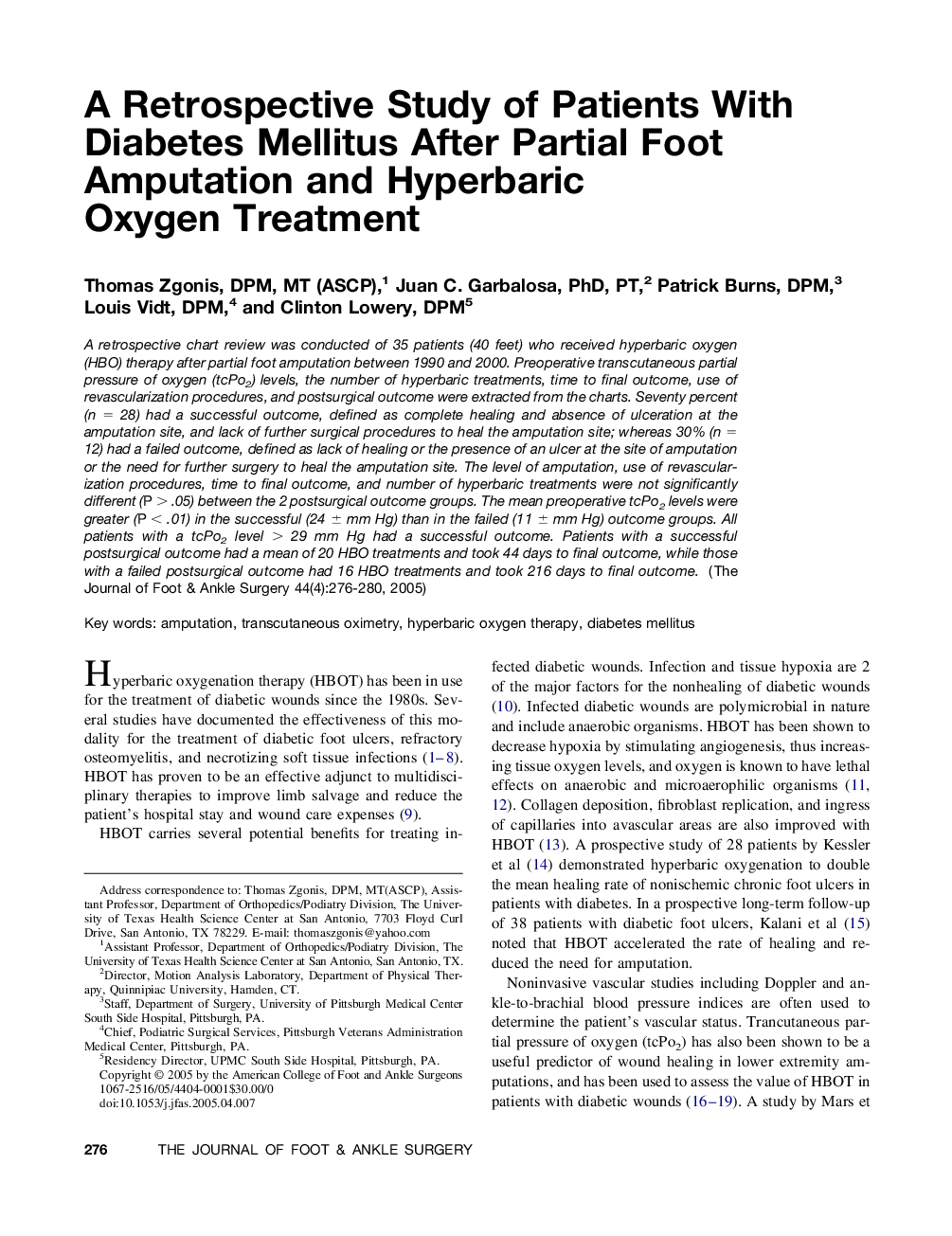| Article ID | Journal | Published Year | Pages | File Type |
|---|---|---|---|---|
| 9928656 | The Journal of Foot and Ankle Surgery | 2005 | 5 Pages |
Abstract
A retrospective chart review was conducted of 35 patients (40 feet) who received hyperbaric oxygen (HBO) therapy after partial foot amputation between 1990 and 2000. Preoperative transcutaneous partial pressure of oxygen (tcPO2) levels, the number of hyperbaric treatments, time to final outcome, use of revascularization procedures, and postsurgical outcome were extracted from the charts. Seventy percent (n = 28) had a successful outcome, defined as complete healing and absence of ulceration at the amputation site, and lack of further surgical procedures to heal the amputation site; whereas 30% (n = 12) had a failed outcome, defined as lack of healing or the presence of an ulcer at the site of amputation or the need for further surgery to heal the amputation site. The level of amputation, use of revascularization procedures, time to final outcome, and number of hyperbaric treatments were not significantly different (P > .05) between the 2 postsurgical outcome groups. The mean preoperative tcPO2 levels were greater (P < .01) in the successful (24 ± mm Hg) than in the failed (11 ± mm Hg) outcome groups. All patients with a tcPO2 level > 29 mm Hg had a successful outcome. Patients with a successful postsurgical outcome had a mean of 20 HBO treatments and took 44 days to final outcome, while those with a failed postsurgical outcome had 16 HBO treatments and took 216 days to final outcome.
Related Topics
Health Sciences
Medicine and Dentistry
Orthopedics, Sports Medicine and Rehabilitation
Authors
Thomas DPM, MT (ASCP), Juan C. PhD, PT, Patrick DPM, Louis DPM, Clinton DPM,
